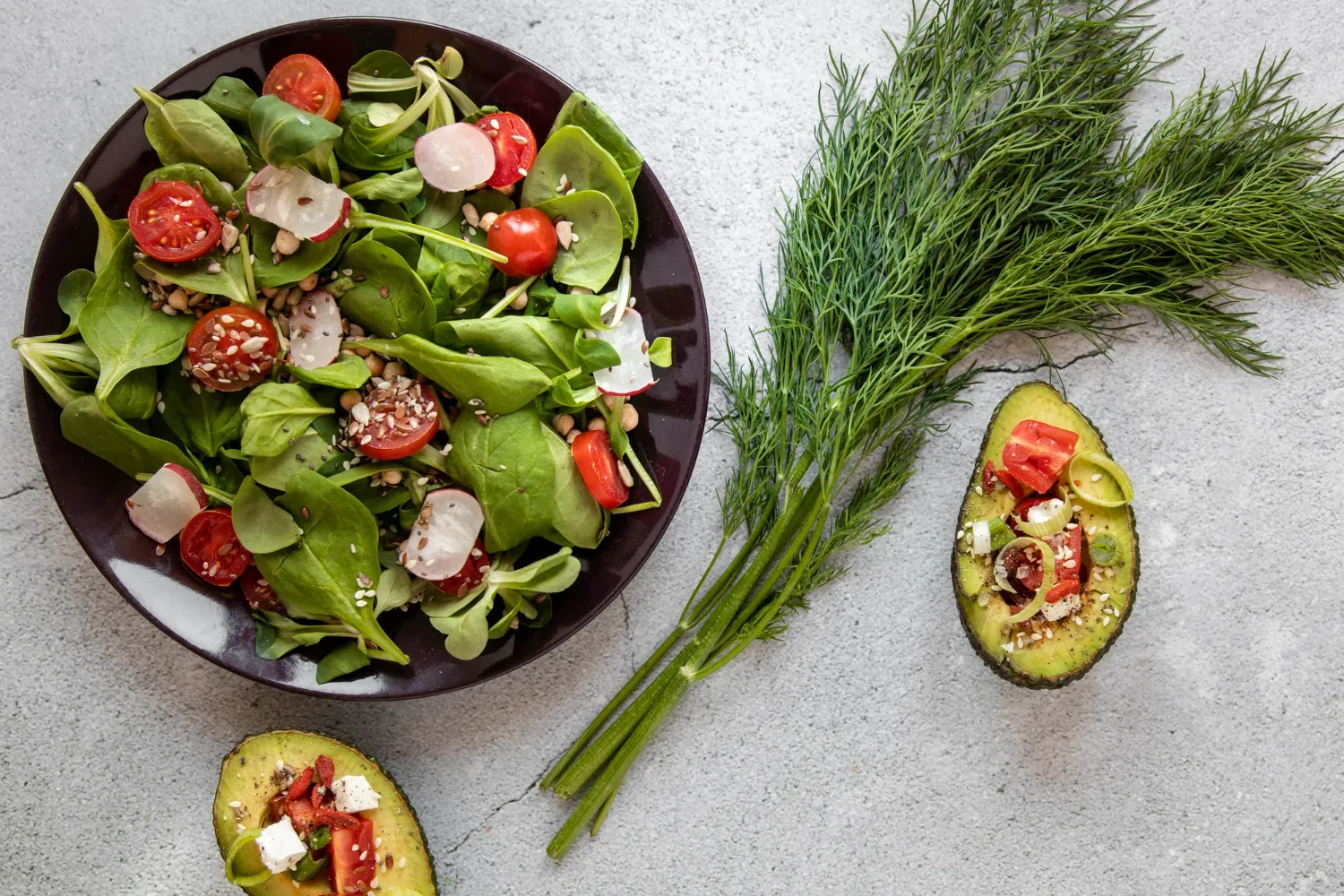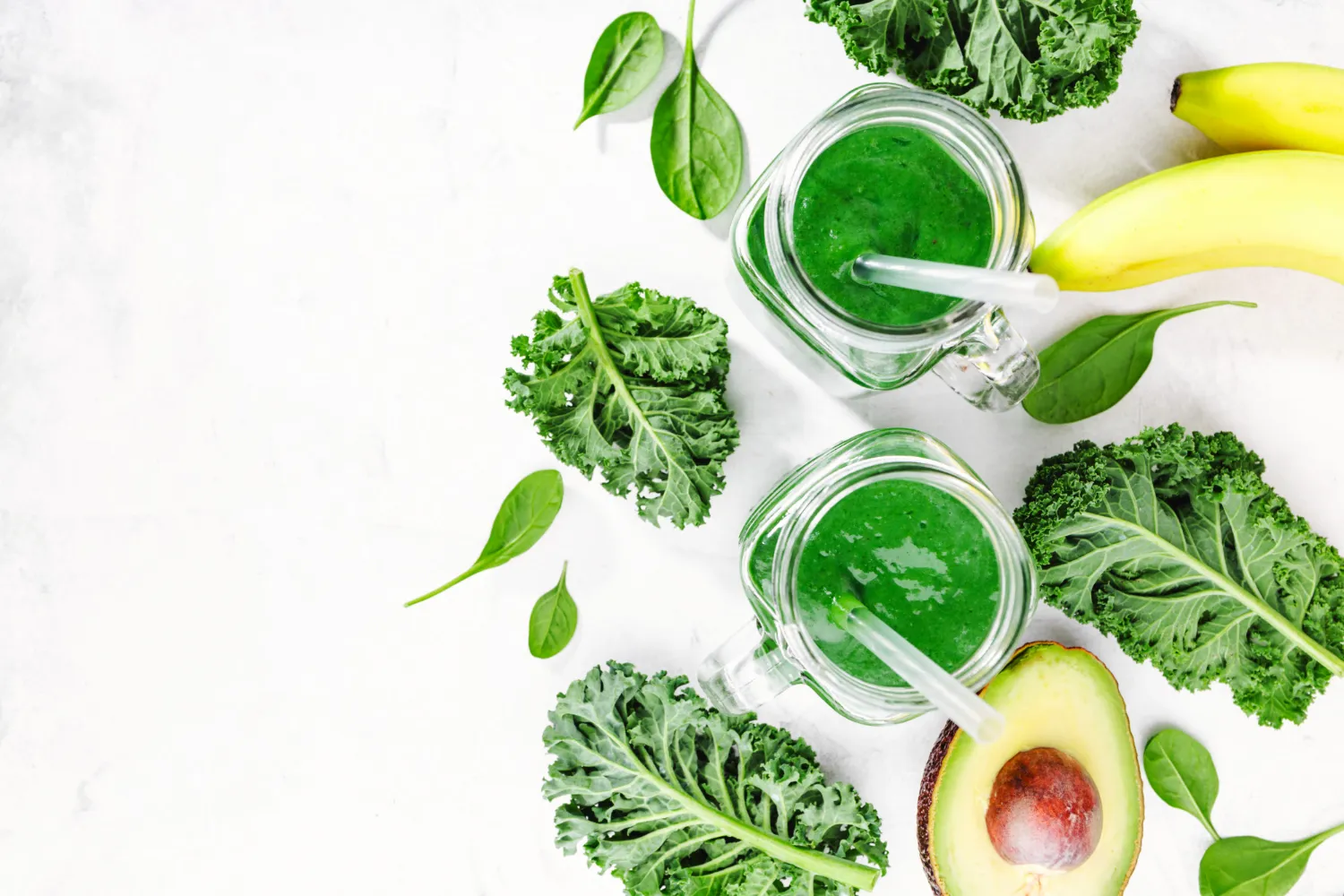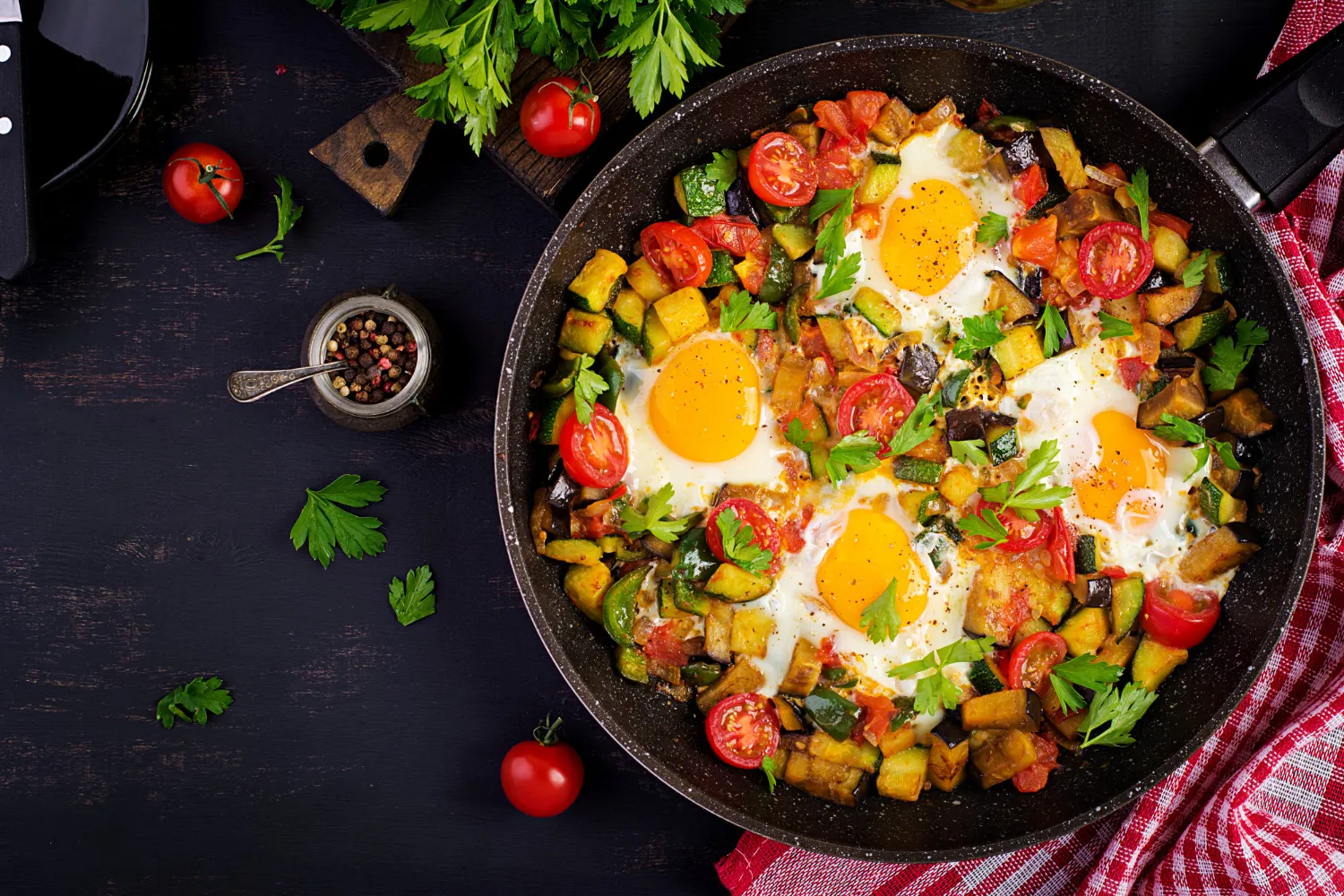For women over 40, weight gain has a significant impact that goes beyond a few extra dress sizes, leading to chronic illness and impairing quality of life.
It is at this time that weight management and corrective nutrition are vital. Not only does it help to reduce abdominal body fat, which is a major contributing factor to several non-communicable diseases, but it also provides support to several of the body’s systems for greater long-term health.
This article is NOT about rapid weight loss and how to lose 10 pounds in 7 days — because that would be crazy and irresponsible, right?
But rather an article which provides a 7-day diet plan to lose 10 pounds, by losing a sustainable 1–2 pounds/week.
In this article, we discuss our 7-day diet plan to lose 10 pounds. We discuss realistic 10-pound weight loss goals, impacts on hormonal health, meal templates, safety tips, and support habits to help you achieve your weight loss goal safely.
Why a 7‑Day Plan Can Work (Safely)

A 7-day plan can sound like a fad diet; however, when approached correctly, it can be the nutritional reset you need to prioritize your health.
While most ‘diets’ focus on removing foods for weight loss, this healthy and sustainable plan adds nutrient-dense whole foods, which can be carried over into a long-term nutrition plan for long-term health.
Realistic 10‑Pound Goal vs. Safe Ranges
Despite what you may have heard online, there is no safe way to lose 10 pounds in seven days. Losing this amount of weight in a short time requires such a severe calorie restriction that it would leave you with little energy to function.
For those who do lose those 10 pounds, chances are they would regain the weight in a matter of days through an unhealthy binge.
Sources indicated a sustainable weight can be achieved at a rate of 1–2 pounds per week, through a manageable calorie deficit. While this will take longer, it allows you to continue fueling the body for daily function and exercise, while providing essential nutrients to support the body’s systems, increasing your chances of keeping the weight off long-term.
How Hormonal Health Impacts Midlife Weight Loss
The decline of estrogen during midlife comes with several challenges; however, few are more noticeable than how it impacts weight loss. Research estrogen is essential for regulating body weight, by decreasing appetite and increasing satiety.
Meanwhile, additional studies show that the decline of estrogen also changes fat tissue distribution from the hips to the abdomen, which is shown to increase cardiometabolic risk.
Weight management through correct nutrition can help alleviate these symptoms and improve overall quality of life.
Core Components of the Plan
In its simplest form, weight loss occurs when we enter a calorie deficit, consuming fewer calories than we burn each day. However, we must manipulate several other areas to make this sustainable.
Below, we highlight these areas, discussing macronutrient balance, hydration, fiber, and glycemic control to help you achieve a long-term healthy change.
Calorie Deficit and Macronutrient Balance
A calorie deficit and balancing macronutrients are two of the biggest components for weight loss. Calories represent the energy content of food, while macronutrients highlight the composition of that energy, categorizing it into carbohydrates, protein, and fats.
Each of us has a basal metabolic rate (daily calorie allowance), which is the amount of energy our body burns during daily activities. Studies show that this is based on several factors, including age, height, weight, and physical activity. When we consume fewer calories than our daily allowance, our body burns fat, even without exercise.
However, as you’d suspect, eating fewer calories can lead to hunger and lower energy levels, which make it unsustainable. This is where balancing macronutrients comes in.
Balancing macronutrients ensures you have enough carbohydrates to sustain your energy level. Protein to preserve muscle and maintain satiety, and healthy fats for hormone balance.
Hydration, Fiber, and Low-Glycemic Choices
Rounding out these components are hydration, fiber, and low-glycemic choices, providing you with the means of curbing hunger and energy levels.
Studies show that water intake can help reduce energy intake, which makes it invaluable for weight loss. Fiber, on the other hand, is shown to slow digestion and reduce blood glucose levels, meaning it improves satiety and sustainable energy levels.
Meanwhile, low-glycemic foods provide slow-release energy, showing improvements to short-term glycemic control, weight, body fat, blood pressure, inflammation, kidney function, and gut health. This includes food such as whole grains, fruits, leafy greens, cruciferous vegetables, legumes, nuts, and seeds.
The Meal Template
Having a template for meals can help you plan your calorie and macronutrient intake. Below, we discuss our recommended structure and the foods for successful weight loss.
3 Meals + 1–2 Snacks Layout
Three meals and one to two snacks are excellent for meeting your dietary requirements and balancing energy levels.
While not essential, eating regularly provides the opportunity to stabilize energy levels and hunger through complex carbohydrates, protein, and healthy fats.
Proteins, Veggies, Whole Grains, & Fats
When constructing meals, sources suggest that 25-30 grams of protein including meat, poultry, fish should be added to each meal. This can help to maintain satiety, reducing hunger between meals.
Meanwhile, complex carbohydrates such as whole grains, vegetables, and fruits are incredible sources of fiber, and provide slow release energy. Healthy fats found in fatty fish, nuts, and seeds can help to balance hormones and support several of the body systems.
Sample 7‑Day Meal Plan

The following is a 7-day diet plan focused on sustainable weight loss, using a three-meal and one snack per day template. Each meal contains a lean source of protein, complex carbohydrates, healthy fats, and fiber.
This plan is one the calorie and macronutrient needs of a 45-year-old woman, 170 cm tall, weighing 80 kg. Below we list the formula to determine her basal metabolic rate (BMR), which is her daily calorie allowance.
BMR Formula
- BMR = 10 x weight (kg) + 6.25 x height (cm) - 5 x age (years) - 161
Here we input her information: 45 years old, 80 kg, 170 cm.
- 10 x 80 + 6.25 x 170 - 5 x 45 -161
- 800 + 1062.5 - 225 - 161 = 1476.6 kal
We now must create a calorie deficit for weight loss. For this example, we will be reducing calorie intake by 176.6 kcal/day to 1300 kcal. This is a small deficit; however, given the daily allowance is already low, this may be a great way to ease the deficit, which can be increased later.
As you progress and body mass decreases, so too does basal metabolic rate. Starting with a small deficit allows for further reduction of calories, allowing for continued weight loss if needed.
Furthermore, this also doesn’t take into account exercise, which will also contribute to the calorie deficit.
- Calories: 1300 kcal
- Carbohydrates: 40% of daily intake
- Protein: 30% of daily intake
- Fats: 30% of daily intake
- These figures are averages across meals, with some meals having slight differences in macronutrient amounts.
Day 1
Breakfast: Veggie Scramble with Whole Grain Toast and Avocado (350 kcal)
- 2 large eggs (140 kcal)
- ½ cup chopped spinach (5 kcal)
- ¼ cup diced tomatoes (10 kcal)
- 1 tsp olive oil (for cooking) (40 kcal)
- 1 slice whole grain toast (70 kcal)
- 2 tbsp sliced avocado (60 kcal)
- Garlic + black pepper (for flavor) (5 kcal)
Benefits: This savory, protein-rich breakfast supports satiety, metabolism, and brain function, with healthy fats and fiber to fuel your morning.
Lunch: Quinoa Salad with Grilled Chicken, Spinach, and Avocado (350 kcal)
- ½ cup cooked quinoa (110 kcal)
- 3 oz grilled chicken breast (120 kcal)
- 1 cup fresh spinach (10 kcal)
- ¼ medium-diced avocado (60 kcal)
- ½ cup cherry tomatoes (15 kcal)
- 1 teaspoon olive oil (40 kcal)
- Lemon juice + herbs (for flavor)(5 kcal)
Benefits: Balanced with lean protein, fiber, and heart-healthy fats, this salad promotes satiety and supports blood sugar balance.
Dinner: Grilled Salmon with Brown Rice and Sautéed Kale (350 kcal)
- 3 oz grilled salmon (180 kcal)
- ½ cup cooked brown rice (110 kcal)
- 1 cup sautéed kale with garlic and olive oil (60 kcal)
- Lemon and herbs for seasoning (0 kcal)
Benefits: Rich in omega-3s and lean protein, this dinner supports heart health and muscle repair while providing fiber and antioxidants.
Snack: Greek Yogurt with Berries and Walnuts (250 kcal)
- ¾ cup nonfat plain Greek yogurt (80 kcal)
- ½ cup mixed berries (35 kcal)
- 1 tbsp chopped walnuts (90 kcal)
- 1 tsp honey (20 kcal)
- Cinnamon (dash) (0 kcal)
Benefits: A satisfying, protein-rich snack that helps muscle recovery and promotes gut health with antioxidants and omega-3 fats.
Day 2
Breakfast: Berry Overnight Oats with Chia Seeds and Almond Butter (350 kcal)
- ½ cup rolled oats (75g cooked) (150 kcal)
- ½ cup unsweetened almond milk (15 kcal)
- ½ cup mixed berries (35 kcal)
- 1 tsp chia seeds (25 kcal)
- 1 tsp almond butter (40 kcal)
- 1 tsp honey or maple syrup (optional) (20 kcal)
- Cinnamon and vanilla extract for flavor (0 kcal)
Benefits: A fiber-rich, satisfying breakfast that fuels energy levels and digestion, with antioxidant-packed berries and healthy fats to support blood sugar balance.
Lunch: Grilled Chicken Grain Bowl (350 calories)
- 3 oz grilled chicken breast (140 kcal)
- ½ cup cooked farro or quinoa (110 kcal)
- ½ cup roasted broccoli and zucchini (50 kcal)
- 1 tsp olive oil drizzle (40 kcal)
- Lemon juice and herbs (0 kcal)
Benefits: A well-rounded, satisfying bowl that promotes sustained energy, gut health, and lean muscle maintenance.
Dinner: Stir-Fried Vegetables with Brown Rice and Grilled Chicken (350 kcal)
- 3 oz grilled chicken breast (140 kcal)
- ½ cup cooked brown rice (110 kcal)
- 1 cup stir-fried mixed veggies with garlic and ginger (60 kcal)
- 1 tsp sesame oil (40 kcal)
Benefits: Combines lean protein and fiber-rich vegetables with healthy fats to support recovery, digestion, and fullness.
Snack: Protein Smoothie with Berries and Almond Butter (250 kcal)
- 1 scoop protein powder (100 kcal)
- ½ banana (50 kcal)
- ½ cup mixed berries (35 kcal)
- 1 tsp almond butter (40 kcal)
- Water or unsweetened almond milk (25 kcal)
Benefits: A delicious, muscle-supporting snack rich in antioxidants and healthy fats to curb cravings and aid recovery.
Day 3
Breakfast: Berry Smoothie Bowl with Granola and Seeds (350 kcal)
- ½ frozen banana (50 kcal)
- ½ cup frozen mixed berries (35 kcal)
- ½ cup unsweetened almond milk (15 kcal)
- 1 scoop protein powder (100 kcal)
- 2 tbsp low-sugar granola (70 kcal)
- 1 tsp chia seeds (25 kcal)
- 1 tsp almond butter (40 kcal)
Benefits: Energizing and antioxidant-rich, this bowl provides fiber, lean protein, and healthy fats to kickstart metabolism and promote fullness.
Lunch: Grilled Chicken Wrap with Hummus and Veggies (350 kcal)
- 1 whole grain wrap (120 kcal)
- 3 oz grilled chicken breast (140 kcal)
- 2 tbsp hummus (50 kcal)
- ½ cup mixed greens and sliced bell pepper (30 kcal)
- Drizzle lemon juice and olive oil (10 kcal)
Benefits: A satisfying, portable meal packed with lean protein, fiber, and heart-healthy fats that support energy and digestive health.
Dinner: Grilled Salmon with Quinoa and Steamed Broccoli (350 calories)
- 3 oz grilled salmon (180 kcal)
- ½ cup cooked quinoa (110 kcal)
- ½ cup steamed broccoli with garlic (40 kcal)
- Squeeze of lemon and herbs (0 kcal)
- 1 tsp olive oil (20 kcal)
Benefits: This meal provides anti-inflammatory omega-3s, high-quality protein, and fiber-rich veggies to support heart, brain, and metabolic health.
Snack: Greek Yogurt Parfait with Berries and Nuts (250 kcal)
- ½ cup plain nonfat Greek yogurt (60 kcal)
- ¼ cup mixed berries (20 kcal)
- 1 tsp honey (20 kcal)
- 1 tbsp chopped walnuts or almonds (80 kcal)
- 1 tsp flaxseeds (30 kcal)
- Dash cinnamon (0 kcal)
Benefits: This creamy snack offers probiotics, protein, and healthy fats to nourish gut health, promote muscle repair, and curb cravings.
Day 4
Breakfast: Avocado Toast with Egg (350 kcal)
- 1 slice whole grain bread (100 kcal)
- ½ avocado, mashed (120 kcal)
- 1 poached egg (70 kcal)
- Cherry tomatoes and baby spinach on the side (30 kcal)
- Drizzle of olive oil and lemon juice (30 kcal)
Benefits: This energizing breakfast delivers fiber, protein, and healthy fats to stabilize blood sugar and fuel your morning.
Lunch: Grilled Chicken and Quinoa Salad (350 kcal)
- 3 oz grilled chicken breast (140 kcal)
- ½ cup cooked quinoa (110 kcal)
- Mixed greens, cucumber, and bell pepper (50 kcal)
- 1 tsp olive oil and balsamic vinegar (20 kcal)
- Sprinkle of pumpkin seeds (30 kcal)
Benefits: A protein-packed, fiber-rich meal that supports muscle repair, digestion, and sustained energy.
Dinner: Beef Stir-Fry with Brown Rice and Veggies (350 kcal)
- 3 oz lean beef strips (150 kcal)
- ½ cup cooked brown rice (110 kcal)
- 1 cup mixed stir-fried cruciferous vegetables (broccoli, cabbage, cauliflower) with garlic and ginger (60 kcal)
- 1 tsp sesame oil (30 kcal)
Benefits: This hearty meal combines iron-rich beef, fiber-loaded veggies, and healthy fats to support energy, muscle function, and immunity.
Snack: Dark Chocolate Yogurt Bowl (250 kcal)
- ½ cup plain nonfat Greek yogurt (60 kcal)
- 1 square 70% dark chocolate (50 kcal)
- ¼ banana, sliced (25 kcal)
- 1 tsp flaxseeds (30 kcal)
- 1 tbsp chopped almonds or walnuts (80 kcal)
Benefits: This satisfying snack provides antioxidants, protein, and healthy fats to curb cravings and promote gut and brain health.
Day 5
Breakfast: Overnight Oats with Berries and Chia Seeds (350 kcal)
- ½ cup rolled oats soaked in ½ cup unsweetened almond milk (100 kcal)
- ¼ cup mixed berries (30 kcal)
- 1 tbsp chia seeds (60 kcal)
- 1 tbsp natural peanut butter (90 kcal)
- Dash of cinnamon and 1 tsp honey (30 kcal)
- Topped with 1 tbsp chopped almonds (40 kcal)
Benefits: This fiber-rich breakfast promotes digestive health and sustained energy while providing healthy fats and antioxidants from chia seeds and berries.
Lunch: Grilled Chicken Wrap (350 kcal)
- 1 whole grain wrap (100 kcal)
- 3 oz grilled chicken breast (140 kcal)
- Mixed greens, sliced tomato, and cucumber (30 kcal)
- 1 tbsp hummus spread (40 kcal)
- Drizzle of olive oil and lemon juice (40 kcal)
Benefits: This satisfying wrap delivers lean protein, fiber, and healthy fats to support muscle function and fullness throughout the afternoon.
Dinner: Grilled Mackerel with Quinoa and Steamed Greens (350 kcal)
- 3 oz grilled mackerel fillet (200 kcal)
- ½ cup cooked quinoa (110 kcal)
- Steamed kale and broccoli with garlic and olive oil (40 kcal)
Benefits: Rich in omega-3 fatty acids, this dinner supports heart health and inflammation reduction while offering protein and fiber from whole grains and greens.
Snack: High-Protein Smoothie (250 calories)
- ½ cup unsweetened almond milk (15 kcal)
- ½ banana (50 kcal)
- ½ scoop protein powder (whey or plant-based) (60 kcal)
- 1 tbsp peanut butter (90 kcal)
- 1 tsp flaxseeds (30 kcal)
- Ice and cinnamon to blend
Benefits: A protein-rich, creamy snack that supports muscle repair and satiety, while providing fiber and healthy fats from flax and peanut butter.
Day 6
Breakfast: Spinach and Mushroom Scrambled Eggs with Whole Grain Toast (350 kcal)
- 2 eggs scrambled with spinach and mushrooms (140 kcal)
- 1 tsp olive oil for cooking (40 kcal)
- 1 slice whole grain toast (80 kcal)
- ¼ avocado sliced (70 kcal)
- Sprinkle of herbs and pepper (negligible calories)
Benefits: This protein-rich, fiber-filled breakfast supports muscle health, energy, and satiety, while providing healthy fats and essential micronutrients.
Lunch: Grilled Beef Salad Bowl (350 kcal)
- 3 oz grilled lean beef strips (150 kcal)
- Mixed greens, arugula, and cherry tomatoes (30 kcal)
- ¼ cup cooked farro (50 kcal)
- 1 tbsp olive oil and lemon dressing (90 kcal)
- Sprinkle of pumpkin seeds (30 kcal)
Benefits: This hearty salad combines lean protein, fiber, and healthy fats to fuel your afternoon with lasting energy and support for tissue repair.
Dinner: Grilled Mackerel with Quinoa and Steamed Broccoli (350 kcal)
- 3 oz grilled mackerel (200 kcal)
- ½ cup cooked quinoa (110 kcal)
- Steamed broccoli with garlic and lemon (40 kcal)
Benefits: Packed with omega-3s, this dinner supports heart and brain health while offering high-quality protein and fiber-rich whole grains and vegetables.
Snack: Greek Yogurt with Mixed Berries and Almonds (250 kcal)
- ½ cup plain Greek yogurt (70 kcal)
- ¼ cup mixed berries (30 kcal)
- 1 tbsp sliced almonds (50 kcal)
- 1 tsp honey (20 kcal)
- 1 tbsp chia seeds (80 kcal)
Benefits: A balanced snack that promotes gut health, muscle recovery, and satiety with probiotics, antioxidants, and healthy fats.
Day 7
Breakfast – Protein Smoothie (350 kcal)
- 1 cup unsweetened almond milk (30 kcal)
- 1 cup frozen mixed berries (70 kcal)
- ½ medium banana (50 kcal)
- 1 scoop protein powder (whey or plant-based) (100 kcal)
- 1 tbsp chia seeds (60 kcal)
- 1 tsp peanut butter (40 kcal)
Benefits: This smoothie delivers antioxidants, fiber, and sustained energy, while promoting muscle repair and digestive health.
Lunch – Grilled Chicken with Quinoa and Veggies (350 kcal)
- 3 oz grilled chicken breast (140 kcal)
- ½ cup cooked quinoa (110 kcal)
- ½ cup steamed broccoli (25 kcal)
- ¼ fruit sliced avocado (60 kcal)
- 1 tsp olive oil drizzle (15 kcal)
Benefits: A balanced plate offering lean protein, healthy fats, and fiber-rich veggies that help stabilize blood sugar and support metabolism.
Dinner – Baked Salmon with Sweet Potato and Spinach (350 kcal)
- 3 oz baked salmon (180 kcal)
- ½ cup roasted sweet potato (90 kcal)
- 1 cup sautéed spinach (30 kcal)
- 1 tsp olive oil for cooking (15 kcal)
- Lemon juice and herbs – minimal calories (0 kcal)
Benefits: This anti-inflammatory meal is rich in omega-3s, fiber, and vitamins, supporting heart health and digestion.
Snack: High Protein Yogurt Parfait (250 kcal)
- ¾ cup nonfat Greek yogurt (90 kcal)
- ½ cup mixed berries (35 kcal)
- 1 tsp almond butter (35 kcal)
- 1 tsp flaxseeds (20 kcal)
- 1 tsp dark chocolate chips (70% cocoa) (30 kcal)
- Cinnamon – dash (0 kcal)
Benefits: This snack provides a satisfying protein boost with antioxidants and healthy fats, great for muscle maintenance and satiety.
Safety and Pitfalls

Weight loss diet plans all require careful monitoring to ensure safe and healthy weight loss. Below, we highlight key areas to focus on to help you safely lose weight.
Monitoring Energy, Digestion & Mood
When a calorie deficit is too large, it can affect energy levels, digestion, and mood. Studies reveal that severe calorie deficits can cause psychological distress, which can promote unhealthy eating practices such as binging, purging, and eating disorders, impacting mental health.
This can also lead to constipation, exhaustion, hair loss, loss of bone strength, and a weakened immune system.
Furthermore, fewer calories can mean less fuel for the body, reducing energy levels, which may lead to feelings of irritability, affecting mood.
When to Consult a Healthcare Provider
Nutrition requires alignment of different components to be successful, which can be challenging for beginners. Healthy professionals such as dieticians and nutritionists can provide diet plans, nutritional breakdowns, and valuable insight into weight loss, increasing your chances of success.
Meanwhile, doctors can also help address any symptoms, decreasing the changes of negative energy, digestive, and mood outcomes, ensuring that you reach your weight loss goals safely.
Supporting Habits
While nutrition is at the front of mind, managing factors such as sleep and stress is also required to ensure you stick to your plan to achieve your goals. Below, we list support habits to give you the best chance of sticking to your weight loss plan.
Sleep, Stress Management & Movement
Factors such as sleep, stress, and movement play a major role in weight loss. Studies show that poor sleep can increase the hunger hormone ghrelin and decrease the satiety hormone leptin, increasing appetite, with less than seven hours per night shown to lead to weight gain, obesity, and cardiometabolic disorders.
Meanwhile, research shows that stress leads to the release of cortisol, increasing appetite for processed foods, while a sedentary lifestyle is shown to increase weight, body fat, and the risk of chronic illness.
Quality sleep of seven hours or more can help reduce hunger and reduced stress can stabilize appetite and the desire to consume processed foods. Daily movement can not only increase energy expenditure, but also prevent the onset of several chronic illnesses.
Food Journaling & Progress Tracking
Over the course of your weight loss journey there will be many highs and lows, which will have you celebrating your win and sadly questioning your sanity when weight plateaus.
Food journaling and tracking progress are incredible tools for not only monitoring your progress and keeping you grounded during the experience.
Food journaling will help you understand which foods work to hit macronutrient targets and satisfy cravings. While tracking presses in the form of scale weight, measurements, and before, and after pictures provide data which can help you see how far you have come, helping you to continue on towards your goals.
After Week 1: Transitioning Forward

Unlike other 7-day plans which claim to help you lose 10 pounds, our weight loss plan is a nutrition reset, providing the foundation for sustainable weight loss. Sure, it may take longer, but it will keep the weight off.
Fortunately, the meals within this nutrition plan are delicious, highlighting that you can lose weight eating flavourful, nutrient-dense whole foods.
Continuing Sustainable Habits
Moving forward, you can make this more sustainable by selecting your favourite meals and preparing them in advance. This can help reduce friction when it comes to making decisions at meal time and improve adherence to your diet.
When to Recalculate or Plan Next Phase
Weight loss is a dynamic process where you will experience several peaks and troughs. After considerable weight loss, weight may plateau for weeks, signaling the need to recalculate the calorie deficit and change up your exercise routine.
Unfortunately, everyone is different, meaning there is no set timeline for these changes. However, with the assistance of your food journal and progress tracking, you will have the data required to make informed adjustments to continue progressing toward your goals.
Sources
- Centers for Disease Control and Prevention (CDC), 2024. Losing weight. [online] CDC. https://www.cdc.gov/healthy-weight-growth/losing-weight/index.html
- Vigil P, Meléndez J, Petkovic G, Del Río JP. The importance of estradiol for body weight regulation in women. Front Endocrinol (Lausanne). 2022 Nov 7;13:951186. doi: 10.3389/fendo.2022.951186. PMID: 36419765; PMCID: PMC9677105. https://pmc.ncbi.nlm.nih.gov/articles/PMC9677105/
- Kuryłowicz A. Estrogens in Adipose Tissue Physiology and Obesity-Related Dysfunction. Biomedicines. 2023 Feb 24;11(3):690. doi: 10.3390/biomedicines11030690. PMID: 36979669; PMCID: PMC10045924. https://pmc.ncbi.nlm.nih.gov/articles/PMC10045924/
- Kodoth V, Scaccia S, Aggarwal B. Adverse Changes in Body Composition During the Menopausal Transition and Relation to Cardiovascular Risk: A Contemporary Review. Womens Health Rep (New Rochelle). 2022 Jun 13;3(1):573-581. doi: 10.1089/whr.2021.0119. PMID: 35814604; PMCID: PMC9258798. https://pmc.ncbi.nlm.nih.gov/articles/PMC9258798/
- Verma, N., Kumar, S.S. and Suresh, A., 2023. An evaluation of basal metabolic rate among healthy individuals — a cross-sectional study. Bulletin of Faculty of Physical Therapy, 28, Article number: 26. [online] https://doi.org/10.1186/s43161-023-00133-z. https://bfpt.springeropen.com/articles/10.1186/s43161-023-00139-6
- Holesh JE, Aslam S, Martin A. Physiology, Carbohydrates. 2023 May 12. In: StatPearls [Internet]. Treasure Island (FL): StatPearls Publishing; 2025 Jan–. PMID: 29083823. https://pubmed.ncbi.nlm.nih.gov/29083823/
- Peres M, Costa HS, Silva MA, Albuquerque TG. The Health Effects of Low Glycemic Index and Low Glycemic Load Interventions on Prediabetes and Type 2 Diabetes Mellitus: A Literature Review of RCTs. Nutrients. 2023 Dec 10;15(24):5060. doi: 10.3390/nu15245060. PMID: 38140319; PMCID: PMC10746079. https://pmc.ncbi.nlm.nih.gov/articles/PMC10746079/
- Habib, A., Ali, T., Nazir, Z., Mahfooz, A., Inayat, Q. and Haque, M.A., 2023. Unintended consequences of dieting: How restrictive eating habits can harm your health. International Journal of Surgery Open, 60, p.100703. https://doi.org/10.1016/j.ijso.2023.100703 https://www.sciencedirect.com/science/article/pii/S240585722300116X
- Lonnie M, Hooker E, Brunstrom JM, Corfe BM, Green MA, Watson AW, Williams EA, Stevenson EJ, Penson S, Johnstone AM. Protein for Life: Review of Optimal Protein Intake, Sustainable Dietary Sources and the Effect on Appetite in Ageing Adults. Nutrients. 2018 Mar 16;10(3):360. doi: 10.3390/nu10030360. PMID: 29547523; PMCID: PMC5872778. https://pmc.ncbi.nlm.nih.gov/articles/PMC5872778/
- Schmid SM, Hallschmid M, Jauch-Chara K, Born J, Schultes B. A single night of sleep deprivation increases ghrelin levels and feelings of hunger in normal-weight healthy men. J Sleep Res. 2008 Sep;17(3):331-4. doi: 10.1111/j.1365-2869.2008.00662.x. Epub 2008 Jun 28. PMID: 18564298. https://pubmed.ncbi.nlm.nih.gov/18564298/
- Watson NF, Badr MS, Belenky G, Bliwise DL, Buxton OM, Buysse D, Dinges DF, Gangwisch J, Grandner MA, Kushida C, Malhotra RK, Martin JL, Patel SR, Quan SF, Tasali E. Recommended Amount of Sleep for a Healthy Adult: A Joint Consensus Statement of the American Academy of Sleep Medicine and Sleep Research Society. Sleep. 2015 Jun 1;38(6):843-4. doi: 10.5665/sleep.4716. PMID: 26039963; PMCID: PMC4434546. https://pmc.ncbi.nlm.nih.gov/articles/PMC4434546/
- van der Valk ES, Savas M, van Rossum EFC. Stress and Obesity: Are There More Susceptible Individuals? Curr Obes Rep. 2018 Jun;7(2):193-203. doi: 10.1007/s13679-018-0306-y. PMID: 29663153; PMCID: PMC5958156. https://pmc.ncbi.nlm.nih.gov/articles/PMC5958156/
- Park JH, Moon JH, Kim HJ, Kong MH, Oh YH. Sedentary Lifestyle: Overview of Updated Evidence of Potential Health Risks. Korean J Fam Med. 2020 Nov;41(6):365-373. doi: 10.4082/kjfm.20.0165. Epub 2020 Nov 19. PMID: 33242381; PMCID: PMC7700832. https://pmc.ncbi.nlm.nih.gov/articles/PMC7700832/
FAQs
Can I really lose 10 pounds in 7 days with this diet plan?
Yes, this plan is designed to avoid the unsafe practices required to do so. A safe and sustainable rate of weight loss is 1–2 pounds per week. This 7-day plan is the foundational reset to begin a healthy journey toward losing 10 pounds over several weeks.
How long will it actually take to lose 10 pounds on this plan?
Based on the healthy and sustainable rate of losing 1–2 pounds per week, you can expect to lose 10 pounds in approximately 5 to 10 weeks. This approach is more effective for long-term success and helps prevent the weight from being regained.
Why is this diet specifically designed for women over 40?
Women over 40 experience hormonal changes, particularly a decline in estrogen, which regulates appetite and body weight. This hormonal shift can also change fat storage to the abdominal area. This diet plan accounts for these changes by focusing on macronutrient balance, fiber, and low-glycemic foods to support hormonal health and target midlife weight gain effectively.
Will I feel hungry while only eating 1300 calories a day?
This plan is designed to manage hunger by focusing on the right kinds of foods. Each meal includes 25-30 grams of protein and high-fiber ingredients like vegetables and whole grains. These components slow digestion and improve satiety, helping you feel fuller for longer, even within a calorie deficit.
What happens after I complete the first 7 days?
The first 7 days serve as a nutritional reset. After week one, the goal is to continue the sustainable habits you've learned. You can use the meal template with your favorite recipes, continue to track your progress, and make adjustments to your calorie needs as your weight changes to continue progressing toward your 10-pound goal.















